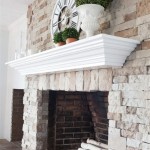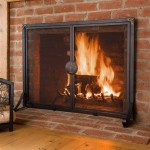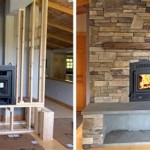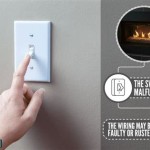Fireplace Blower Fan Installation: A Comprehensive Guide
A fireplace offers warmth and aesthetic appeal to a home, especially during colder months. However, the radiant heat emitted by a traditional fireplace can often be inefficient, leaving some areas of a room feeling cold. A fireplace blower fan can significantly improve the fireplace's heating efficiency by circulating the warm air into the room. This article provides a comprehensive guide to fireplace blower fan installation, outlining the necessary steps and considerations for a successful project.
Fireplace blower fans, also known as fireplace blowers or fireplace fan kits, are designed to draw cool air from the floor level, pass it through the heated firebox, and then push the warmed air back into the room. This forced-air circulation helps distribute heat more evenly, potentially reducing heating costs and improving overall comfort. Before attempting installation, it is crucial to select the correct type and size of blower for the specific fireplace model. Using an improperly sized or incompatible blower could result in poor performance or even damage to the fireplace.
Selecting the Right Fireplace Blower Fan
The first step in installing a fireplace blower fan is selecting the appropriate unit for the fireplace. Several factors must be considered, including the fireplace's dimensions, type (e.g., gas, wood-burning), and available space for installation. Many manufacturers provide sizing charts that recommend blower models based on these parameters. It is essential to consult these charts and choose a blower specifically designed for the fireplace being used.
Key considerations include the BTU (British Thermal Unit) output of the fireplace and the cubic feet per minute (CFM) rating of the blower. A higher BTU output generally requires a blower with a higher CFM rating to effectively circulate the heat. Additionally, consider the noise level of the blower. Some models are quieter than others, and selecting a quieter option can enhance the overall enjoyment of the fireplace. It's also imperative to verify whether the fireplace is already pre-wired for a blower. If it is not, additional electrical work will be necessary, potentially requiring the services of a qualified electrician.
Preparing for Installation
Prior to starting the installation process, gather all necessary tools and materials. These typically include a screwdriver set (both Phillips head and flathead), wire strippers, wire connectors, a drill (possibly with masonry bits if drilling into brick or stone is required), a voltage tester, and safety glasses. Ensure the fireplace is completely cool before commencing any work. It is also recommended to disconnect the power to the fireplace at the circuit breaker to prevent electrical shock.
Carefully read the manufacturer's instructions included with the blower fan kit. These instructions will provide specific details on the installation process for that particular model. It is important to understand the instructions thoroughly before proceeding. Identify the location where the blower will be installed. Most blowers are designed to be placed at the bottom of the firebox, behind the ash lip or within a designated blower compartment. Clean the area thoroughly to remove any debris or ash that could interfere with the blower's operation.
Step-by-Step Installation Process
The installation process generally involves several key steps. First, position the blower inside the fireplace according to the manufacturer's instructions. Ensure that the blower is securely placed and does not obstruct the airflow within the firebox. If the blower requires mounting hardware, attach it to the fireplace following the provided instructions. This may involve drilling pilot holes and securing the blower with screws.
Next, connect the blower's electrical wiring. This typically involves connecting the blower's power cord to the fireplace's electrical outlet or to a separate power source. If the fireplace is pre-wired for a blower, simply plug the blower's power cord into the outlet. If not, additional wiring may be required. Use wire strippers to expose the ends of the wires and connect them using wire connectors, ensuring a secure and insulated connection. Use a voltage tester to verify that the connection is properly wired and that the correct voltage is present. If unsure about electrical connections, consult a qualified electrician.
Finally, test the blower to ensure it is functioning correctly. Turn on the power to the fireplace and activate the blower. Listen for any unusual noises or vibrations. Check that the warm air is being circulated effectively into the room. If the blower is not functioning properly, recheck all connections and consult the manufacturer's troubleshooting guide. Ensure that all safety precautions are followed throughout the installation process.
Post-Installation Considerations and Maintenance
After installing the fireplace blower fan, it is essential to monitor its performance and perform regular maintenance to ensure its longevity. Periodically clean the blower to remove any dust or debris that may accumulate. This can be done using a vacuum cleaner or a soft brush. Inspect the blower's wiring and connectors to ensure they remain secure and insulated. Look for any signs of wear or damage to the blower's components, such as the fan blades or motor.
It is also essential to be aware of the blower's limitations. While a fireplace blower can improve the efficiency of a fireplace, it is not a substitute for a central heating system. The blower will only circulate the heat produced by the fireplace, and its effectiveness will depend on the size and insulation of the room. Avoid overloading the fireplace with too much fuel, as this can damage the blower and create a fire hazard. Always follow the fireplace manufacturer's recommendations regarding fuel type and quantity.
By carefully selecting the right blower, preparing for installation, following the step-by-step process, and performing regular maintenance, homeowners can effectively improve the heating efficiency of their fireplaces and enjoy a warmer, more comfortable home environment. A properly installed and maintained fireplace blower fan can be a valuable addition to any home with a fireplace.

Noisy Gas Fireplace Blower Here S How To Replace It Diy

Installing A Fireplace Blower Gfk4 Gfk4a In Heatilator Natural Gas

Fbk 250 Fireplace Blower Kit Installation

How Is A Fireplace Blower Kit Wired Fireplaceblowers Com

How To Install A Blower Into Majestic Or Other Gas Fireplace Installation Tips Tricks

How To Replace Your Rsf Fireplace Blower Fan

Why Should I Get A Fireplace Blower For My Masonry

How Is A Fireplace Blower Kit Wired Fireplaceblowers Com

Fbk 100 Fireplace Blower Fan Kit Installation For Lennox And Superior

Why Should I Get A Fireplace Blower For My Masonry
Related Posts








